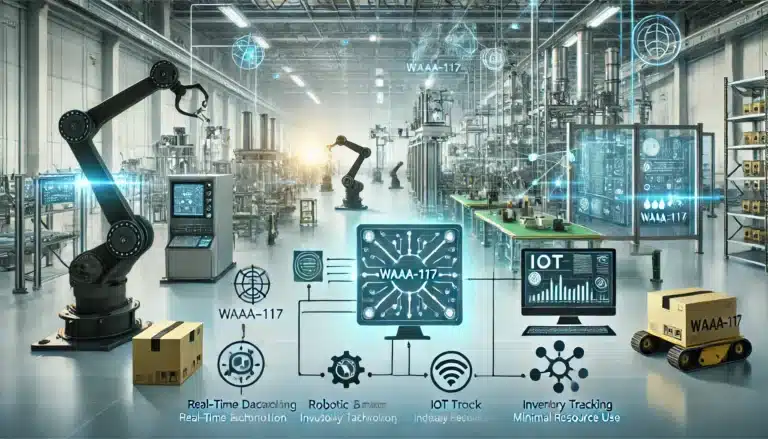2023-1954: How 70 Years Reshaped Our World

The Dawn of Computing
In 1954, the world of computing was in its infancy. The first commercial computer, the UNIVAC I, had been introduced just two years prior, weighing a staggering 16,000 pounds and occupying an entire room. These early computers relied on vacuum tubes for their operation, generating immense amounts of heat and consuming vast quantities of electricity.
Despite their massive size and power requirements, these pioneering machines possessed only a fraction of the capabilities found in even the most basic modern devices. With memory measured in kilobytes and processing speeds in the range of thousands of operations per second, they seem almost comically underpowered by today’s standards.
Yet, these humble beginnings paved the way for the technological marvels we now take for granted. The ability to perform complex calculations and store vast amounts of data, once the exclusive domain of room-sized behemoths, now resides in the palm of our hands. Smartphones, tablets, and laptops have eclipsed the performance of those early systems, all while fitting comfortably into a backpack or pocket.
The contrast between the computing power of 1954 and that of the present day is nothing short of staggering. What was once a specialized tool accessible to only a privileged few has become an integral part of daily life for billions around the globe. The dawn of computing may have been humble, but it set the stage for a technological revolution that continues to reshape our world.
The Internet Revolution
The emergence of the internet and world wide web in the late 20th century ushered in a profound transformation, enabling global communication and information sharing on an unprecedented scale. What began as a modest network for research and academic collaboration rapidly evolved into a vast digital ecosystem, connecting people across continents and cultures.
The internet’s early days were marked by rudimentary webpages, dial-up modems, and the pioneering efforts of visionaries who recognized its potential. As bandwidth and processing power increased, the web blossomed into a rich tapestry of multimedia content, e-commerce platforms, and social networks. Suddenly, the world’s knowledge was at our fingertips, and instantaneous communication became the norm.
This technological revolution reshaped industries, disrupted traditional business models, and democratized access to information. Brick-and-mortar stores faced fierce competition from online retailers, while media outlets grappled with the challenges of digital distribution. Entrepreneurship flourished, as innovative startups capitalized on the internet’s boundless opportunities.
Beyond its economic impact, the internet profoundly influenced social dynamics and cultural exchange. Geographical barriers dissolved, enabling global communities to form around shared interests and ideologies. Citizen journalism and user-generated content challenged traditional media narratives, giving voice to diverse perspectives and amplifying marginalized voices.
However, the internet’s rapid proliferation also raised concerns about privacy, security, and the spread of misinformation. As society grappled with these challenges, debates raged over the role of technology companies, online censorship, and the ethical implications of a digitally interconnected world.
Historical Upheavals
The decades between 2023-1954 witnessed seismic shifts in the global order, as the world grappled with the aftermath of World War II and the emergence of new superpowers. The Cold War, a tense ideological standoff between the United States and the Soviet Union, cast a long shadow over international relations. This period saw the proliferation of nuclear weapons, proxy wars, and a constant struggle for global influence.
Amidst this climate of hostility, the space race between the two superpowers captured the world’s imagination. The launch of Sputnik 1 by the Soviet Union in 1957 kickstarted an era of unprecedented technological advancement, culminating in the historic Apollo 11 moon landing in 1969, a triumph for American ingenuity and human exploration.
On the domestic front, the United States underwent a profound social transformation with the civil rights movement. Spearheaded by visionary leaders like Martin Luther King Jr. and Rosa Parks, this grassroots campaign challenged the entrenched system of racial segregation and discrimination. Through nonviolent resistance, landmark legislation, and Supreme Court rulings, the movement paved the way for greater equality and justice.
The latter half of the 20th century also witnessed the birth of numerous international organizations aimed at fostering global cooperation and preventing future conflicts. The United Nations, established in 1945, became a beacon of hope for diplomacy and collective action, while organizations like NATO and the European Union sought to strengthen alliances and promote economic integration.
These historical upheavals not only reshaped the geopolitical landscape but also laid the foundation for many of the freedoms and technological advancements we enjoy today. The echoes of this tumultuous period continue to reverberate, serving as a reminder of the resilience of the human spirit and the enduring pursuit of progress.
Shifting Cultural Landscapes
The decades between 2023-1954 witnessed seismic cultural shifts that reshaped societal norms and values. In the mid-20th century, traditional gender roles were deeply entrenched, with women often confined to domestic spheres and facing widespread discrimination in the workforce and public life. However, the women’s liberation movement of the 1960s and 1970s challenged these long-held patriarchal structures, paving the way for greater gender equality and empowerment.
Diversity and inclusivity also made significant strides during this period. The civil rights movement, spearheaded by iconic figures like Martin Luther King Jr. and Rosa Parks, fought against racial segregation and discrimination, ultimately leading to landmark legislation such as the Civil Rights Act of 1964 and the Voting Rights Act of 1965. These hard-won victories opened doors for marginalized communities to participate more fully in society and assert their rights.
The LGBTQ+ community also gained greater visibility and acceptance, although the path was arduous. The Stonewall riots of 1969 catalyzed a pivotal moment in the fight for LGBTQ+ rights, sparking a global movement for equality and recognition. While progress has been uneven, societal attitudes have shifted dramatically, with same-sex marriage legalized in many countries and greater protections against discrimination.
The media played a crucial role in shaping cultural narratives and influencing societal perceptions. The rise of television, and later the internet and social media, provided platforms for diverse voices and perspectives to be amplified. While traditional media outlets initially reinforced mainstream values, alternative and independent media sources emerged, challenging dominant narratives and giving voice to underrepresented groups.
As society became more interconnected and globalized, cultural exchange and cross-pollination accelerated, leading to a rich tapestry of diverse influences. Cuisines, music, art, and traditions from around the world found new audiences, fostering a greater appreciation for cultural diversity and inclusivity.
Lessons from the Past
The breathtaking pace of change between 2023-1954 holds profound lessons for humanity. In just seven decades, we advanced from hulking, rudimentary computers to holding the world’s knowledge in our pockets. This remarkable technological progress enabled equally remarkable societal transformations – from greater civil rights and personal freedoms to global interconnectivity.
Perhaps the most vital lesson is to appreciate how rapidly innovation can reshape our world. What seemed like science fiction in 1954 became a mundane reality just a few generations later. This whirlwind of progress underscores humanity’s vast potential when we harness technology as an enabler rather than an impediment.
At the same time, the intense acceleration of technological capabilities came with unforeseen consequences. Environmental degradation, loss of privacy, perpetuation of inequalities – these emerged as new challenges demanding solutions. The 2023-1954 period illuminates the need to develop technology thoughtfully and sustainably to uphold human values.
Ultimately, the strides between 2023-1954 revealed our species’ incredible capacity for progress when we apply knowledge, ethics and vision. By appreciating how far we’ve come while recognizing hazards to mitigate, we can approach the future with humility and wisdom. The possibilities are bounded only by our imagination and willingness to learn from the past.
Glimpsing the Future
As we peer into the next 70 years, the realm of possibilities stretches vastly before us. The exponential growth of technology witnessed in the past century sets the stage for innovations that could reshape our world in unimaginable ways.
In the field of computing, we may witness the advent of quantum computing, harnessing the mind-bending principles of quantum mechanics to perform calculations at unprecedented speeds. This could unlock new frontiers in fields like cryptography, materials science, and pharmaceutical research. Moreover, the continued miniaturization of electronics could lead to the integration of computing power into everyday objects, creating a seamless digital fabric woven into our lives.
The rise of artificial intelligence (AI) is poised to be one of the defining technological revolutions of the coming decades. As AI systems become more advanced and capable of general intelligence, they could augment human abilities in virtually every domain, from scientific discovery to artistic expression. However, the ethical implications of such powerful AI must be carefully navigated to ensure its responsible development and deployment.
Space exploration may experience a renaissance, driven by the ambitions of both government agencies and private companies. Ambitious goals, such as establishing permanent human settlements on the Moon or Mars, could become reality. Additionally, advances in propulsion and materials science could enable us to venture further into the solar system and beyond, unlocking new frontiers of scientific discovery.
Perhaps the greatest challenge of the next 70 years will be addressing the existential threat of climate change. Innovative solutions in renewable energy, carbon capture, and geoengineering may be crucial in mitigating the effects of global warming and preserving the delicate balance of our planet’s ecosystems. Technological breakthroughs, coupled with a collective global effort, could pave the way for a more sustainable future.
While the specifics of these future developments remain uncertain, one thing is clear: the next 70 years will be a testament to humanity’s ingenuity, resilience, and unwavering pursuit of knowledge and progress.






